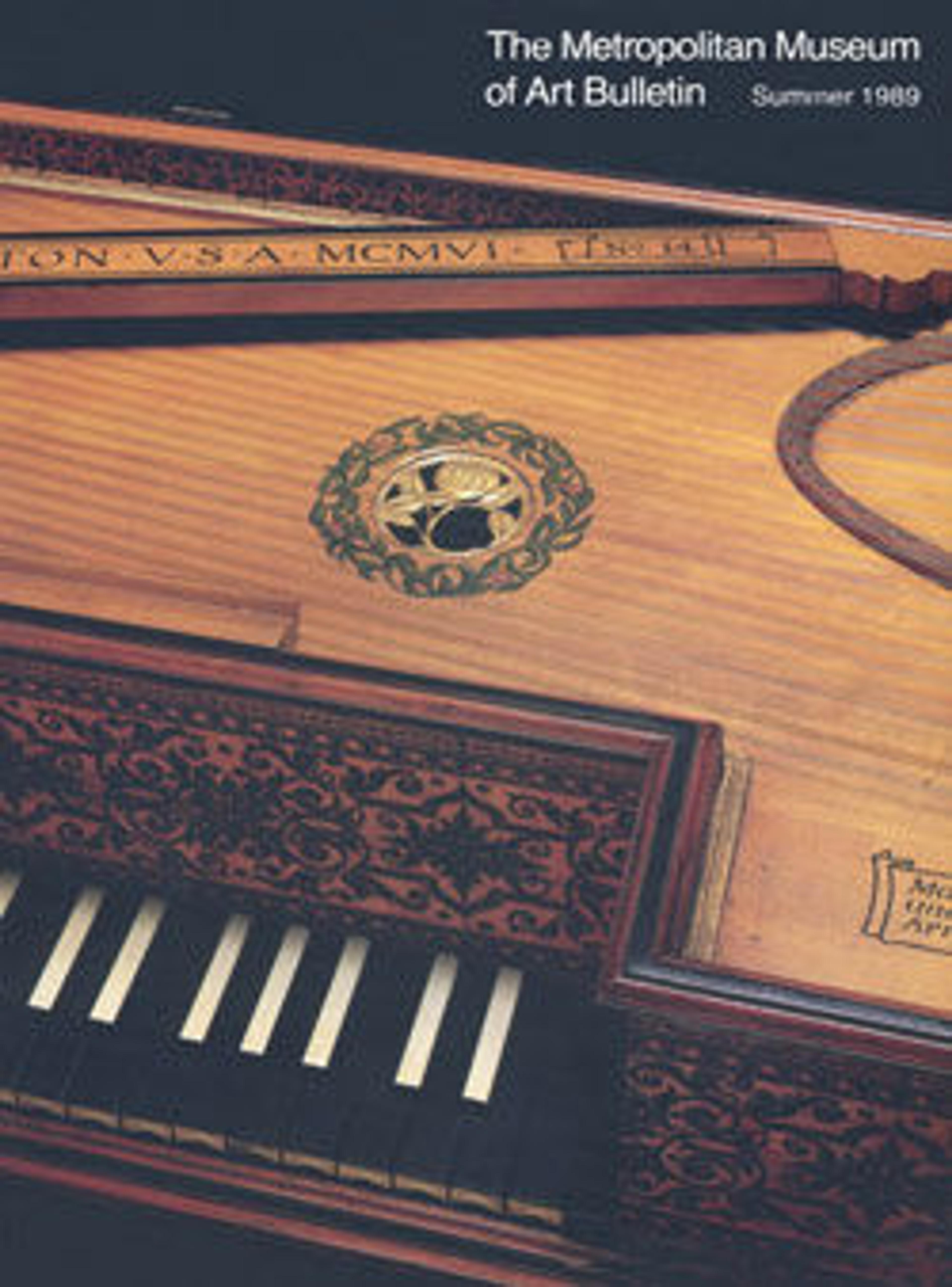Harmonium
The harmonium is the term most commonly applied to reed pump organs made in Europe. This example was made by the venerable Parisian firm Victor and Auguste Mustel. Victor Mustel (1815–1890) was born in Le Havre and learned the carpentry trade. In 1844, he moved to Paris where he worked in several workshops building free reed instruments. He established his own firm in 1853 and won a prize for his harmonium design in the Paris exposition of 1855. He trained his son Auguste (1842
Stop knobs above keyboard: O/forte/expressif; SB/sub bass/16 pds; C/contre basse/16 p; B/basse/8 p; 5/harpe/eolienne/2 pds; 4/basson/8 pds, 3/clairon/4 pds; 2/bourdon/16 pds; 1/cor anglais/8 pds; 1p/percussion/et/cor anglais8 pds; E/expression; 1/flute/8 pds; 2/clarinette/16 pds; 3/fifre/4 pds; 4/hautbois/8 pds; 5/musette/16 pds; 6/voix celeste/16 pds; 7/baryton/32 pds/ 8/harp eolienne/8 pds; S/salicional/16 pds; O/forte/expressif
Technical description: Heavy rosewood veneer case with hinged cover over keyboard, with music rack attached beneath cover; keyboard with ivory naturals, ebony accidentals, compass C-c4; flanking and above keyboard, hand stops with white ceramic heads; two knee levers operate swell shutters; two levers operated by side of foot, next to pedals, operate forte-expressive mechanism; two pedals covered in red velvet operate two feeders below reservoir within case bottom; above this, a divided windchest holding eight complete sets of brass free reeds; windchest and key mechanism constructed in layers that can be hinged apart for access within; with a high mahogany chair, the back with six fluted pillars, the front two legs similarly decorated, the seat covered with red velvet.
Stop knobs above keyboard: O/forte/expressif; SB/sub bass/16 pds; C/contre basse/16 p; B/basse/8 p; 5/harpe/eolienne/2 pds; 4/basson/8 pds, 3/clairon/4 pds; 2/bourdon/16 pds; 1/cor anglais/8 pds; 1p/percussion/et/cor anglais8 pds; E/expression; 1/flute/8 pds; 2/clarinette/16 pds; 3/fifre/4 pds; 4/hautbois/8 pds; 5/musette/16 pds; 6/voix celeste/16 pds; 7/baryton/32 pds/ 8/harp eolienne/8 pds; S/salicional/16 pds; O/forte/expressif
Technical description: Heavy rosewood veneer case with hinged cover over keyboard, with music rack attached beneath cover; keyboard with ivory naturals, ebony accidentals, compass C-c4; flanking and above keyboard, hand stops with white ceramic heads; two knee levers operate swell shutters; two levers operated by side of foot, next to pedals, operate forte-expressive mechanism; two pedals covered in red velvet operate two feeders below reservoir within case bottom; above this, a divided windchest holding eight complete sets of brass free reeds; windchest and key mechanism constructed in layers that can be hinged apart for access within; with a high mahogany chair, the back with six fluted pillars, the front two legs similarly decorated, the seat covered with red velvet.
Artwork Details
- Title:Harmonium
- Maker:Victor and Auguste Mustel (French)
- Date:after 1886
- Geography:Paris, France
- Culture:French
- Medium:Wood, various materials
- Dimensions:Height: 112.8 cm (44-1/2 in.)
Width: 127.9 cm (50-3/8 in.)
Length (perpendicular to keyboard): 69.7 cm (27-1/2 in.)
3-octave span: 49 cm (19-38 in.)
Height of chair: 94.6 (37-1/4 in.) - Classification:Aerophone-Free Reed-harmonium
- Credit Line:Gift of Miss Helen Sears through Mrs. Alma Birmingham
- Object Number:44.59a, b
- Curatorial Department: Musical Instruments
More Artwork
Research Resources
The Met provides unparalleled resources for research and welcomes an international community of students and scholars. The Met's Open Access API is where creators and researchers can connect to the The Met collection. Open Access data and public domain images are available for unrestricted commercial and noncommercial use without permission or fee.
To request images under copyright and other restrictions, please use this Image Request form.
Feedback
We continue to research and examine historical and cultural context for objects in The Met collection. If you have comments or questions about this object record, please contact us using the form below. The Museum looks forward to receiving your comments.
